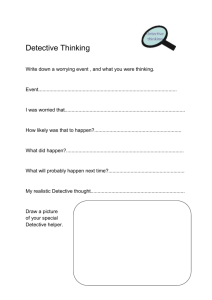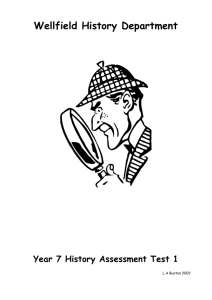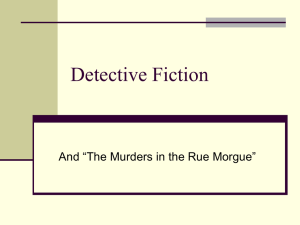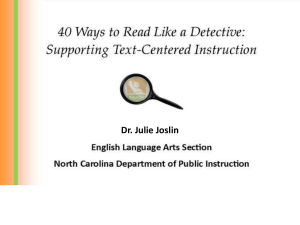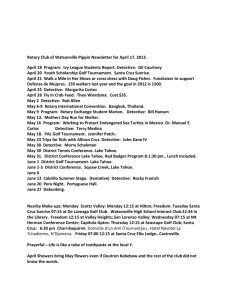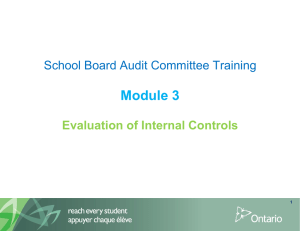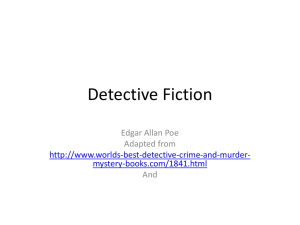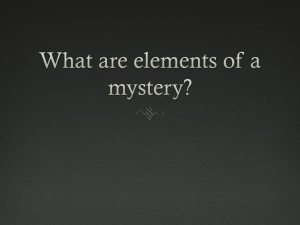Lecture - Formula of the Classic Detective Story
advertisement
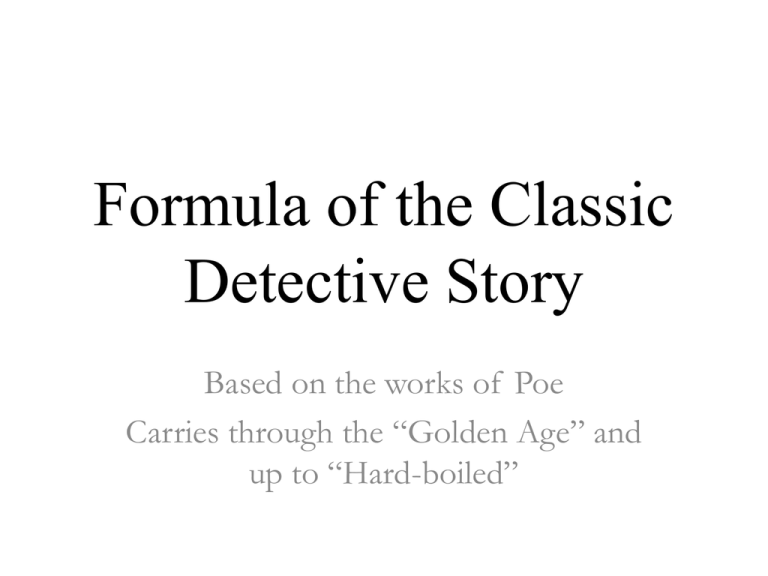
Formula of the Classic Detective Story Based on the works of Poe Carries through the “Golden Age” and up to “Hard-boiled” Situation • Criminal unknown: find identity and motive • Criminal known: determine means or locate enough evidence to establish guilt • Crime: Poe established TWO main types – Grotesque murder (often with sexual overtones) – Political intrigue • Victim: very little character development! – Keeps humanity out of the mix. This would cloud the detective’s view and hinder his ability Pattern of Action 1. 2. 3. 4. Introduction to the detective Crime and clues Investigation Announcement of the solution (*this is NOT the apprehension) 5. Explanation of the solution 6. Denouement (apprehension) Intro to the Detective • An example of his/her skill – (ie: “Murders at the Rue Morgue”) – This helps the reader’s confidence in the detective’s ability to solve the crime • Break in the calm of detective’s retreat – (ie: library, sitting room, etc.) – Symbolically portrays the crime as an intrusion to the norm – Helps emphasize the personal and moral detachment of the detective from the crime The Crime • This MUST have clues that point to someone or something – Do not need to be linear • MUST appear insolvable Investigation • While formulating a conclusion, the witnesses, suspects should further confuse the reader – this is where the detective emerges – (ie: the red herrings) • The investigation usually threatens 1 or more characters the reader has been made to sympathize with – Therefore, the solution will solve the crime AND rescue the characters the reader wants freed Announcement of Solution • This is the FIRST climax of the story – The reader can finally see through the detective’s eyes • This DOES NOT necessarily include the apprehension of the criminal! – This allows for TWO possible climaxes The Explanation • New angle of vision – The answer has always been there, but the reader must look at the clues in a different way – The detective reveals his true intellect • Clues are initially set out of order, the explanation realigns them • Criminal is usually the least likely person who has NO character relationship with the audience – This allows the criminal to represent the personification of guilt without involving the reader’s feelings The Apprehension • Sometimes this occurs following the solution • Sometimes a trap is set up to answer the mystery AND capture the criminal • This is brief so as not to upstage the detective • The classic detective story is more concerned with identifying the guilty, not the punishment Characters and Relationships • Four main roles: 1. The detective: Extreme intelligence, far beyond a regular citizen 2. The criminal: Complex motives/interesting actions. Always defined as BAD to remove question of guilt 3. The victim: Must hold little sympathy, but much attention 1. Obscure and ordinary but meet an extraordinary demise. 4. Those threatened by the crime, but cannot solve it. (ie: the police, the narrator/sidekick, the red herrings) 1. This represents the middle class disrupted by the crime The Setting • Usually split between and isolated place and a big city – Symbolic relationship between chaos and order • By separating crime from society the writer can remove additional complexities – The classic detective story requires a clear distinction between guilty and innocent – the controlled setting helps to support this
